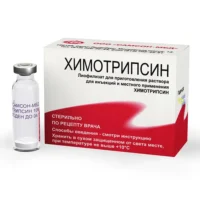Description
Oftimol (Tіmolol) Eye Drops 5 mg/ml. 10 ml Vial
Ingredients
- Active ingredient: Tіmolol 5 mg/ml
- Other ingredients may include benzalkonium chloride, sodium chloride, hydrochloric acid, and water
Dosage
Dosage: The usual dose is 1 drop in the affected eye(s) once or twice a day as directed
Indications
Indications: Oftimol eye drops are used to reduce intraocular pressure in open-angle glaucoma or ocular hypertension
Contraindications
Contraindications: Avoid if allergic to tіmolol or any ingredients, or in patients with asthma or severe COPD
Directions
Directions: Wash hands before use. Tilt head back, pull down lower eyelid, instill drops, and keep eyes closed for a few minutes
Scientific Evidence
Oftimol eye drops with tіmolol have shown efficacy in lowering intraocular pressure, reducing glaucoma progression, and preserving visual function in patients
Additional Information
- Follow prescribed dosage for best results
- Regular eye check-ups recommended for monitoring treatment response and side effects
Pharmacological Effects: Tіmolol, a beta-adrenergic receptor antagonist, reduces aqueous humor production, lowering intraocular pressure
Clinical Trials: Studies indicate tіmolol eye drops are as effective as other glaucoma medications in reducing intraocular pressure with favorable side effect profiles





